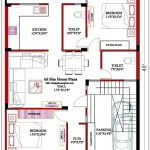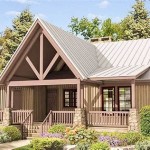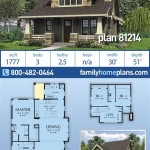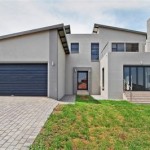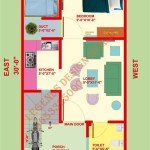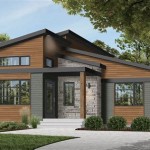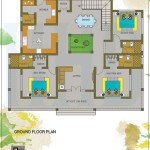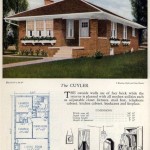Small Prefab House Floor Plans
Small prefab houses, also known as modular or factory-built homes, offer an efficient and often cost-effective alternative to traditional stick-built construction. A crucial aspect of any prefab home project involves selecting an appropriate floor plan. This article explores various considerations and design options related to small prefab house floor plans.
Key Considerations for Small Prefab Floor Plans
Before diving into specific layout options, several factors warrant careful consideration:
- Budget: Prefab homes can offer cost savings, but the complexity of the floor plan and chosen materials impact the final price. A simpler layout generally translates to lower manufacturing and assembly costs.
- Lot Size and Orientation: The available land dimensions and its orientation towards the sun influence the ideal floor plan. A narrow lot might necessitate a multi-story design, while a south-facing lot offers opportunities for passive solar heating.
- Lifestyle and Needs: The intended use of the prefab house – whether it's a primary residence, a vacation home, or a rental unit – determines the optimal layout. Consider the number of occupants, desired amenities (e.g., home office, guest room), and accessibility requirements.
- Local Regulations: Building codes and zoning ordinances dictate permissible building sizes, setbacks, and other construction parameters. Ensure compliance with these regulations before finalizing any floor plan.
- Transportation and Assembly: Prefabricated modules are transported to the site and assembled. The chosen floor plan must be compatible with transportation limitations and crane accessibility if required.
Popular Small Prefab House Floor Plan Styles
Numerous prefab floor plan styles cater to various needs and preferences:
- Studio: Open-plan layouts maximize space in smaller square footage. These designs often combine living, dining, and sleeping areas within a single volume.
- One-Bedroom: Suitable for individuals or couples, one-bedroom plans provide a dedicated sleeping area and often include a combined kitchen and living space.
- Loft: Lofted designs incorporate a second-story sleeping area or storage space, effectively increasing usable square footage without expanding the building footprint.
- Two-Bedroom: Designed for small families or individuals requiring additional space, these plans often feature distinct bedrooms, a separate living area, and one or two bathrooms.
- Tiny Homes: These minimalist designs prioritize functionality and efficiency within a compact footprint, typically less than 400 square feet.
Maximizing Space in Small Prefab Homes
Several design strategies can enhance the sense of spaciousness in small prefab homes:
- Open Floor Plans: Eliminating interior walls visually expands the space and encourages natural light penetration.
- Multi-Functional Spaces: Combining different functions within a single area, such as a kitchen island that also serves as a dining table, optimizes space utilization.
- Built-in Storage: Integrating clever storage solutions, such as under-stair storage or built-in shelving, reduces clutter and maximizes usable floor area.
- Large Windows and Natural Light: Ample natural light creates an airy and spacious ambiance. Large windows, skylights, and strategically placed mirrors can enhance natural light penetration.
- Light Color Palettes: Lighter wall and furniture colors reflect more light, making the space appear larger and brighter.
Exploring Prefab Floor Plan Resources
Several resources facilitate the process of finding the ideal prefab floor plan:
- Prefab Home Manufacturers: Many manufacturers offer a range of pre-designed floor plans or customization options.
- Online Design Platforms: Several online platforms provide tools for designing and visualizing custom floor plans.
- Architectural Design Professionals: Architects specializing in prefab homes can assist in developing custom floor plans tailored to specific needs and site conditions.
Customizing Prefab Floor Plans
While many prefab manufacturers offer standard floor plans, customization options are often available:
- Modifying Existing Plans: Minor adjustments, such as relocating windows or doors, can be made to existing plans.
- Combining Modules: Multiple modules can be combined to create larger or more complex layouts.
- Designing from Scratch: Working with a designer or architect allows for a fully customized floor plan that meets specific requirements.
Evaluating Prefab Floor Plans
Once several potential floor plans have been identified, a thorough evaluation is crucial:
- Traffic Flow: Analyze the movement patterns within the home to ensure convenient circulation and avoid bottlenecks.
- Privacy: Consider the placement of bedrooms and bathrooms to ensure adequate privacy for occupants.
- Functionality: Evaluate the placement of appliances, furniture, and storage to ensure optimal functionality and ease of use.
- Aesthetics: Consider the overall aesthetic appeal of the floor plan and how it aligns with personal preferences.
Sustainability in Small Prefab House Floor Plans
Incorporating sustainable design principles can enhance the environmental performance of small prefab homes:
- Passive Solar Design: Optimizing window placement and building orientation can maximize solar heat gain in winter and minimize it in summer.
- Energy-Efficient Appliances and Lighting: Selecting energy-efficient appliances and lighting reduces energy consumption and operating costs.
- Water Conservation Features: Implementing low-flow fixtures and rainwater harvesting systems conserves water resources.
- Sustainable Materials: Utilizing recycled and locally sourced materials minimizes the environmental impact of construction.
Adaptability and Future Needs
Consider future needs when selecting a small prefab floor plan:
- Flexibility: Opt for designs that allow for future modifications or expansions, such as adding a room or converting a space for a different purpose.
- Accessibility: Incorporating features like wider doorways and ramps can ensure accessibility for individuals with mobility limitations.
- Changing Lifestyle Needs: Consider how evolving lifestyle needs, such as growing families or working from home, might impact the suitability of the floor plan over time.

Small Modular Home 805 Sq Ft Kintner Builder Pennsylvania Quality Prefab Contractor Tiny Living

Gallery A Small Prefab House In Spain Plans Homes Floor

Floor Plans Cvs 3242k1 0 Manufactured And Modular Homes In 2024 Home House Plan With Loft Small

Coolest Prefab Home By The Depot Living Small House Plans Floor U Shaped

Modular House Plans Modularhomeowners Com

Charming Small Prefab Home Model Idesignarch Interior Design Architecture Decorating E

Small Prefab Mini House One Cabins

Modern Prefab Homes Under 50k You Can Buy Right Now Jjchouses

Tiny House Floor Plans Absolute Houses

Technology Green Energy Sustainable House Plans Casas Modulares Prefabricadas Planos De

